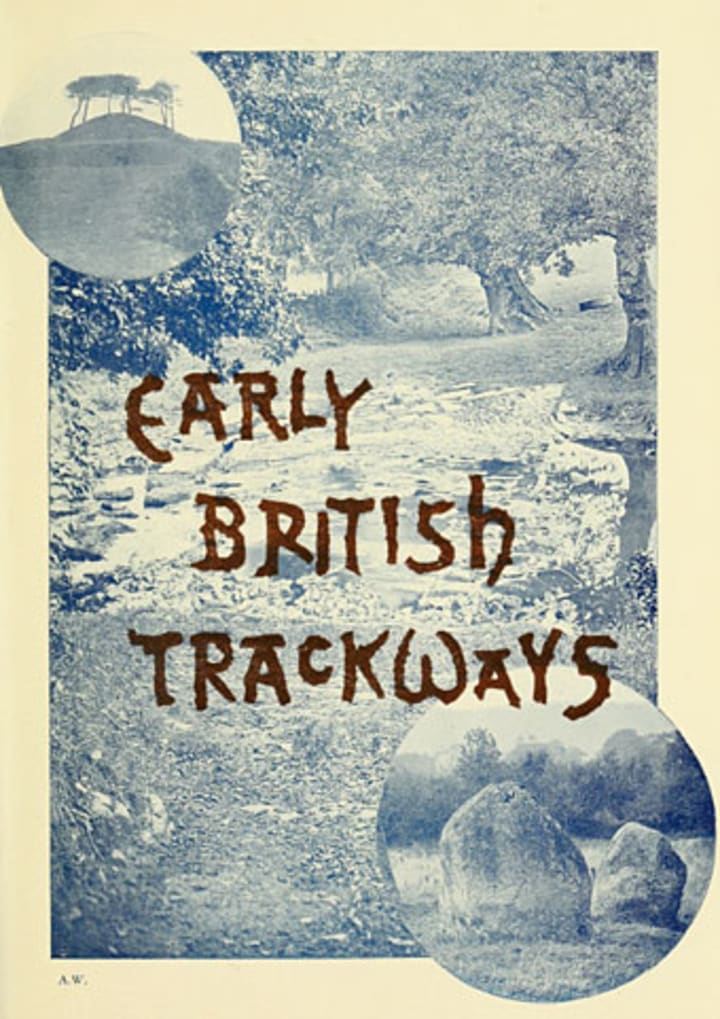
Much has been written about ley lines, but amid the sacred energy, UFOs and levitating boulders, it’s sometimes forgotten that the phrase was coined by a modest man who believed that ley lines were simply ancient trackways.
One bright afternoon at the end of June 1921, a gleaming roadster – a rakish 1919 Wolseley Stellite, its brass trim glinting in the sharp sunlight – pulled over at Blackwardine Cross in Herefordshire. Its 66-year-old driver, who had spent his life exploring every corner of the county as an outrider for the family businesses of flour milling and brewing, had no need for directions, but consulted his map anyway.
Something else was on his mind.
As he glanced between the map and the landscape, Alfred Watkins – retired businessman, amateur antiquary and expert beekeeper; a photographer, baker and the inventor both of an exposure meter and a novel form of brown loaf – had something of an epiphany. Indeed, it was such a profound revelation, Watkins later claimed to have tapped into an ancestral memory and devoted the rest of his life to explaining his vision.
Secret Lines
Looking north west from the crossroads towards Croft Ambrey hill fort, he noticed a striking alignment of historic and prehistoric features that ran, via a short stretch of old lane and over various hilltops, to the spot where he stood and then beyond to Risbury Camp and an archaeological dig unearthing Roman remains. Surveying the scene from higher ground later, he saw the same pattern repeated in every direction.
Watkins was convinced there was a grid of secret lines in the Herefordshire countryside; a network of mounds, hummocks and tumps, moats, megaliths and camps that coalesced in his mind to form the nodes of a prehistoric track system.

In a paper he delivered only four months later to his local antiquarian group, Watkins theorised the lines were the work of pre-Roman surveyors or ‘dodmen’, a name he arrived at via a tortured etymology that involved a local dialect name for a snail.
Likewise, the name he gave to his tracks was based on a misinterpretation of the Anglo-Saxon place name element ‘ley’. He outlined his ideas in the books Early British Trackways – an illustrated and augmented transcription of his hastily prepared paper and, most famously, The Old Straight Track.

Professional archeologists didn’t like the idea of leys at all, but it was a huge success with the public. It became fashionable to stride out into the countryside in plus-fours with a compass, a map and a copy of one of Watkins’ books trying to line up the nation’s geography with its history. Picnics were organised, hip flasks and wicker hampers were deployed, and many a golden summer day was whiled away in the service of rural exploration. Watkins’ third book, The Ley Hunter’s Manual – a kind of across-the-field guide to ley lines – was even endorsed in The Scouter, the newsletter of the Boy Scouts, as having the “power to turn any country walk into a thrilling adventure”. Watkins had elevated the Sunday stroll into an observance, a singular focus on the landscape.
The End of the Golden Age
Watkins died in 1935, war intervened and much of the enthusiasm for this new hobby passed with the end of that Edwardian golden age. For nearly 30 years leys were forgotten until a little booklet Skyways and Landmarks by ex-RAF pilot, Tony Wedd, made ripples in 1962 by claiming ley lines were navigational aids for UFOs.
Wedd’s pamphlet inspired a short flurry of activity in the world of ufology including the publication of The Flying Saucer Vision by John Michell, which took Wedd’s basic premise and ran with it, claiming that the occupants of the UFOs aided early human society but had abandoned us as we became increasingly materialistic.
Michell’s version of humanity’s fall from grace recalled a lost golden age caught in the same sunbeams that glinted off Watkins’ roadster in Edwardian England, long before modernity had made its own lines on the landscape. Michell underlined the same world view in his 1969 book, The View Over Atlantis, a classic New Age text which dragged the ley line into public consciousness again, this time as the conductor of unknowable energies, the remains of an ancient spirituality, set to wake in the coming Age of Aquarius.
It is a moving, impassioned and urgent text and most of the ideas of modern ley hunting by dowsing for telluric ‘energy’ were first mooted in its pages.
It has the rare distinction of both being wise and certifiably crazy at the same time, but its approach brought an aesthetic sensibility into amateur archeology and emphasised looking not just at monuments, but at the whole landscape.
Professional archeologists continued to try to ignore ley lines. Many solid cases can be made against them; statisticians say that finding significant alignments between random points such as telephone boxes, or convenience stores on a map is as easy as lining up prehistoric sites.
A related difficulty is with Watkins’ multiple natural hilltops showing up in an alignment; more than two summits on a leyline must mean either they are all part of a natural ridge and must be discounted or that a supernatural agency is moving mountains for the benefit of the dodman.
Meanwhile critics of ley line energy dowsing might ask exactly what kind of energy is being sensed and if they can pick it up with an old bent coat hanger or a rod of hazel, surely it can be measured by a scientific instrument of some kind?
With as many different ideas of what ley lines might be as there are researchers, it took a book length approach to debunk some of the pseudoscience. In Ley Lines in Question, by Tom Williamson and Liz Bellamy (1983), many of these questions were considered and the blunt conclusion was that hunting for ley lines was a ‘pathetic alternative to conventional archeology’.
All of which reinforces the idea that, despite Watkins’ early care to be as scientific in his presentation of the evidence as he could and his proposed pedestrian uses for ley lines, the act of ley hunting is still largely a matter of personal faith, a journey for its own sake with no clear destination in mind.
Astral Wonderland
In his efforts to order elements of the British countryside along die-straight tracks, Watkins drew as many unscientific and flawed conclusions as he did lines across his maps. And when Michell took up the cause in the 1960s, inspiring countless dowsers of unknown energies and opening the doors to ever wilder ideas like UFOs and plasma vortex-formed crop circles, it elevated some stretches of vanilla farmland into a kind of astral wonderland.

Yet ley hunting is an experiential occupation rather than an objective science. Try walking part of a ley, surrender yourself to the straight line and you begin to realise there is magic afoot in the British landscape. As thousands of ley hunters will tell you, that magic is around every corner in these isles, because the very act of plotting a line and walking it is enough to see the world in a fresh way.
It is our response to landscape and our senses of place that is the great mystery. But to respond we need to experience first. For awakening our consciousness and opening up a window into our perception of the world around us, Watkins and all who followed him on the old straight track deserve our applause.
About the Creator
Ian Vince
Erstwhile non-fiction author, ghost & freelance writer for others, finally submitting work that floats my own boat, does my own thing. I'll deal with it if you can.






Comments
There are no comments for this story
Be the first to respond and start the conversation.